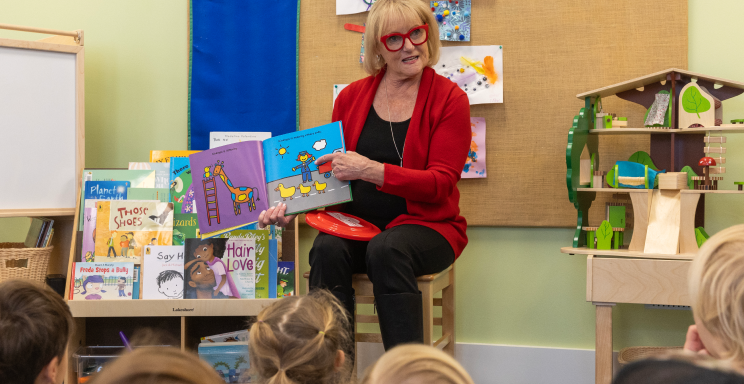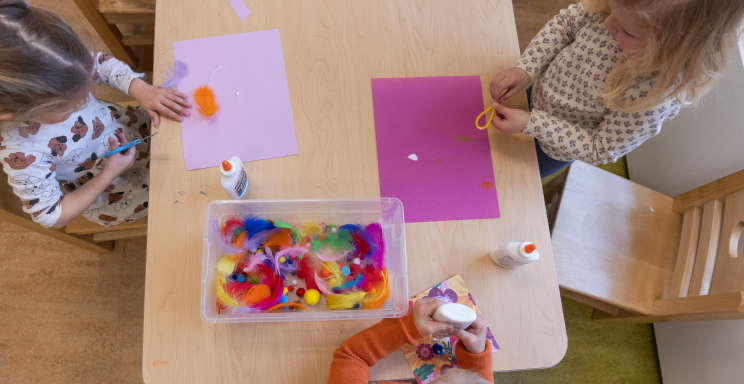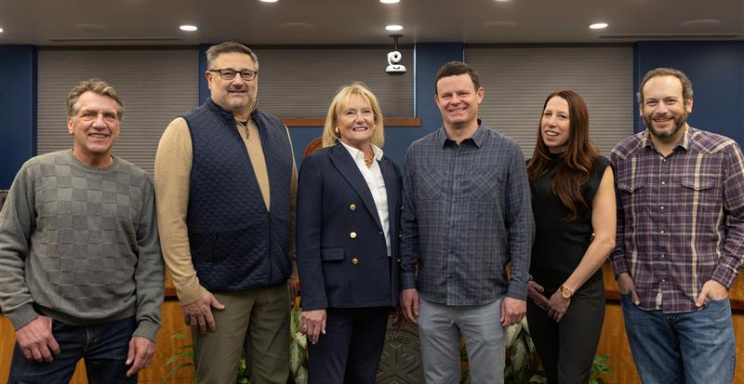“Thanks to this program, I am able to go to work knowing my son is safe, loves his daycare center and is learning so much. I don’t have to worry about him. This program provided me with assistance I couldn’t find elsewhere and so desperately needed, allowing me to pursue an exciting new position at work.”
-Stephanie M., Park City Resident
Background: Tourism Economy Faces Workforce Pressures
Park City, Utah is a small mountain town with a big footprint. Known for its world-class ski resorts and Olympic legacy, Park City welcomes millions of visitors each year despite a year-round population of just 8,500. That demand puts pressure on local services and the workforce required to keep them running.
Park City Municipal Corporation is one of the largest employers in the region, responsible for essential services like public safety, transportation and community development. Yet recruiting and retaining staff has become increasingly difficult. High housing costs and rising child care expenses are pricing out the essential workers who keep the city functioning. Additionally, growth around the region has increased hiring competition for employers.
City leaders saw the trend clearly: without access to affordable child care, the local economy would suffer.
Solution: A Community-Wide Commitment to Child Care
Needs Assessment Illuminates Critical Challenges
With growing concerns about child care access, families were rethinking whether they could live or work in Park City. To better understand the issue, the municipality partnered with the Early Childhood Alliance of the Park City Community Foundation and Summit County to conduct a detailed needs assessment. The 2023 Early Childcare and Education Survey received more than 700 responses, and the data revealed that child care was not only unaffordable but also hard to find. Specifically:
– 63% said child care issues impacted their employment.
– Only 5% found it easy to locate quality, affordable child care.
– 66% reported spending more than 10% of their income on child care, exceeding the federal affordability threshold of 7%.
The analysis also revealed that the Utah State Childcare Assistance Program, a Department of Workforce Services (DWS)-run program that helps parents cover the cost of child care, was underutilized and that $1.16 million in federal funds tied to child care were at risk of expiring.
In response, the Park City Council reviewed the data, held public discussions — including with local families — and took decisive action. With no dedicated funding source, they voted unanimously to delay capital projects and redirect $1 million from the operational budget to child care.
Launching Municipal Child Care Scholarships
With the data in hand, the city formed a working group to propose child care scholarships. Park City’s Needs-Based Childcare Scholarship Program launched in January 2024 to support local families, city employees and child care providers. Designed to complement Utah’s underutilized state assistance program, the program requires income-based applicants to apply for both forms of support to maximize impact.
“It was clear that the state program for child care assistance was underutilized,” said Park City Mayor Nann Worel. “We wanted to encourage participation in that program so that it could complement our efforts while we also added an additional layer of support in the city.”
To manage the initiative, Park City partnered with Upwards, a national child care network, to handle outreach, provider engagement and application processing.
“It wasn’t feasible to run this in-house,” said Michelle Downard, resident advocate at Park City Municipal. “Upwards helped us get it off the ground quickly and reach the families who needed it most.”
Results: Early Impact and Growing Momentum
Expanded Child Care Access and Awareness
More than 100 children have been enrolled in 28 participating child care centers since the program’s launch. Additionally, the use of Utah’s state child care assistance locally has more than doubled. Following Park City’s lead, the wider county where Park City sits, Summit County, adopted the program to expand the impact around the region.
Importantly, child care as an economic driver is now top-of-mind for city officials; the topic is part of broader community conversations on land use, economic development, philanthropy and more.
How It Works
Park City’s child care tuition scholarships are available on a first-come, first-served basis. The largest scholarships are available to income-eligible residents who meet these needs-based criteria:
– Residents of Park City or Summit County
– Have a child who is not yet eligible for kindergarten and who attends a regulated child care provider in Summit County
– Make less than 100% of the area household median income (about $150,000 for a family of four)
These families must also apply for DWS support and make a minimum contribution of 10% of household income per month.
Smaller scholarships are also available to other local residents and employees of a city or county business, as well as employees of Park City Municipal and Summit County. Eligibility requirements and amounts vary.
Finally, regulated child care providers in Summit County serving children who are eligible for DWS benefits can apply to receive subsidies of $300 per child per month.
Challenge: Building Trust
During the program rollout, some families expressed concern about sharing personal financial information required to determine eligibility. Park City continues working with partners to ensure privacy and build trust among community members.
Advice to Other Communities
Take the First Step
“Make a commitment and then figure out how to make it happen. Don’t wait,” said Mayor Worel. “While you may have to take a leap of faith, our results have shown that this is the right thing to do.”
Don’t Go It Alone
“We quickly realized that it was not feasible for us to administer the program in-house without dedicated resources,” Mayor Worel added. Outsourcing administration to a trusted partner was key to getting the program off the ground.
Be Part of the Solution
Tailor your solution to the needs of your community, and be ready to adapt. “We don’t have a perfect cure for improving child care access,” said Downard. “But we’re part of the effort. Find a solution that’s best for your needs.”





